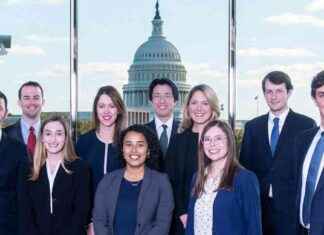**The Federal Circuit’s Interpretation of ‘Obtain’ in Patent and Trademark Law**
On July 26, 2024, the U.S. Court of Appeals for the Federal Circuit made a significant decision in the case of Softview LLC v. Apple Inc., shedding light on the interpretation of the term ‘obtain’ in the context of patent and trademark law. This ruling has sparked a debate on the consistency of the Federal Circuit’s approach in these two realms.
**The Softview Decision**
The case of Softview involved an estoppel provision in a U.S. Patent and Trademark Office (USPTO) regulation under the America Invents Act (AIA). The regulation stated that a patentee is prohibited from “taking action inconsistent with [an] adverse judgment, including obtaining in any patent… a claim which is not patentably distinct from a finally refused or canceled claim.” The court narrowly construed this regulation to apply only to newly issued and amended claims, excluding existing, unamended claims.
**Contrast in Interpretation**
Just nine months prior to the Softview decision, the Federal Circuit had ruled on a series of cases concerning a section of the Lanham Act related to fraudulent trademark registrations. The court concluded that certain maintenance filings in the USPTO were acts of “obtaining” a registration, while others were not. This contrast in interpretation between patent and trademark law has raised questions about the Federal Circuit’s consistency in applying the term ‘obtain.’
**Reconciling Patent and Trademark Precedents**
The author of the article initially suggested that all post-registration filings under Sections 8, 9, and 15 of the Lanham Act should be considered acts of “obtaining,” or none of them should. However, with the Softview decision in mind, the author now sees merit in treating all maintenance filings as acts of “obtaining” a registration.
**An Updated Perspective**
Drawing parallels between amended patent claims and “amended” trademark registrations, the author argues that both represent updated versions of intellectual properties with different rights and susceptibilities. The analogy is made to a car being upgraded or maintained, highlighting the evolving nature of these legal assets.
**Revisiting Trademark Interpretation**
In light of the Softview ruling, the author calls for a fresh examination of the Federal Circuit’s treatment of “obtained” in the trademark context. The comparison between amended patent claims and trademark registrations subject to post-registration filings suggests that all such filings should be considered acts of “obtaining” to ensure consistency in the interpretation of the term across patent and trademark law.
**Conclusion**
The Softview decision has brought to light the need for a reevaluation of the Federal Circuit’s interpretation of ‘obtain’ in patent and trademark law. By drawing parallels between patent claims and trademark registrations, the author argues for a more cohesive approach to understanding and applying the term in both realms of intellectual property law.








